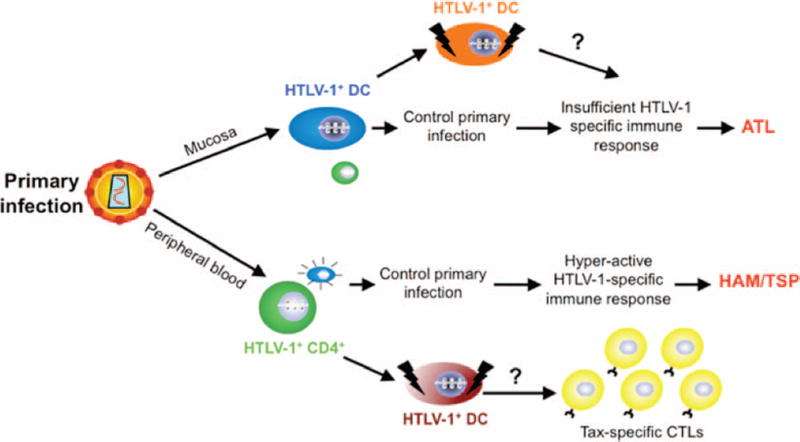FIGURE 3.
Hypothesized disease outcome following entry of human T-cell leukemia virus type 1 (HTLV-1).The virus can enter the body through either the mucosa or peripheral blood. Following mucosal exposure, local resident dendritic cells (DCs) would be expected to pick up the cells and initially control the infection. However, some infected individuals develop compromised DC functions, leading to insufficient immune response and eventually to adult T-cell leukemia (ATL). In the case of peripheral blood exposure, blood DCs would be able to control the initial threat. However, as chronic infection develops, the DCs are in a state of constant stimulation leading to a hyperactive immune response and eventually to HTLV-1-associated myelopathy or tropical spastic paraparesis (HAM/TSP). CTL = cytotoxic T lymphocyte.

